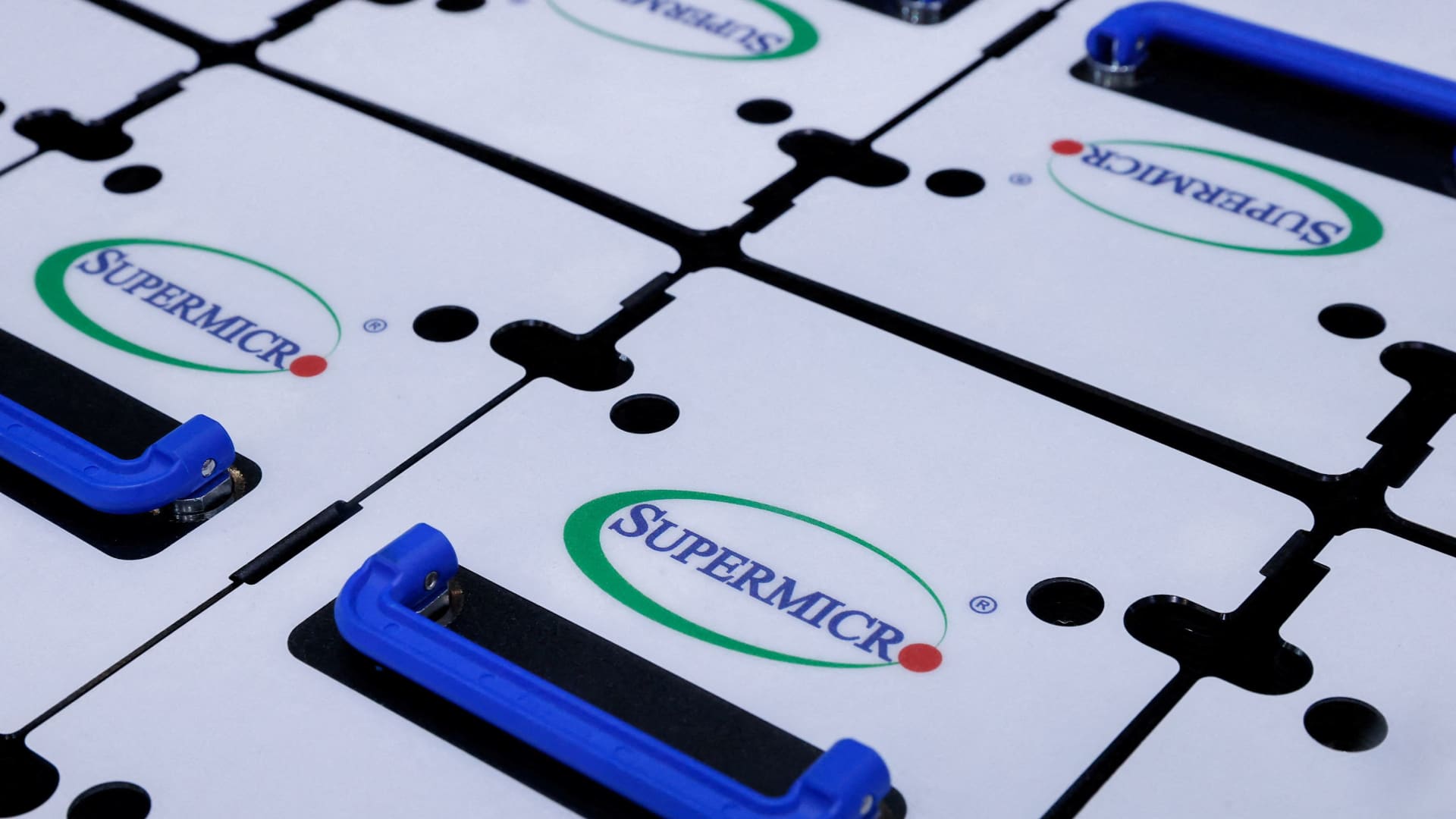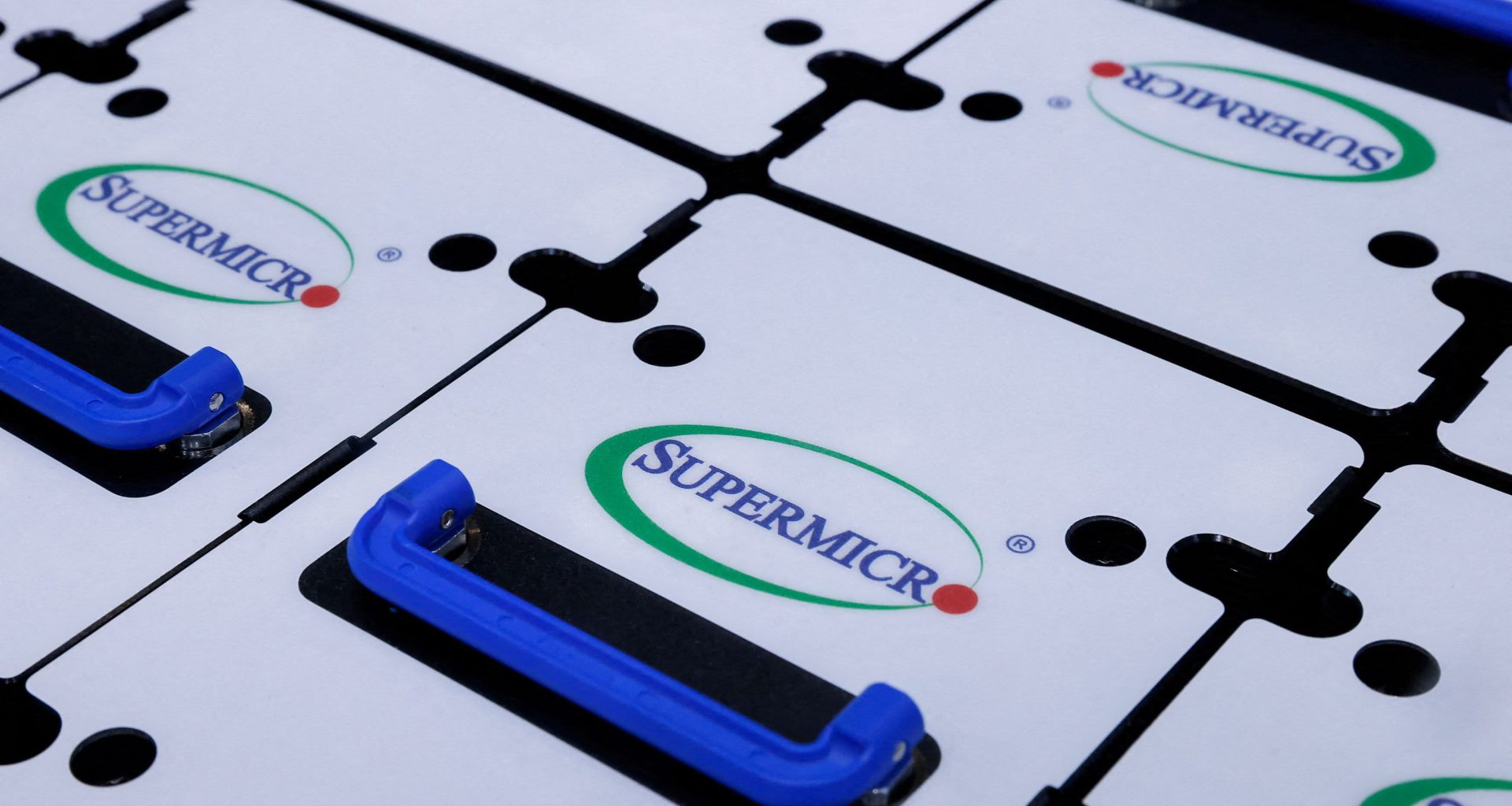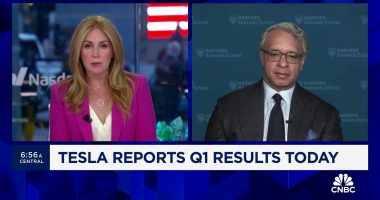
At law school, we learned about “proximate cause,” one of the few valuable concepts you can take from three years of drudgery. It’s about who and what caused the injury and who pays for it.
The current stock market lends itself to proximate causes, as in, “We have to find a cause for the pronounced downturn that could lead tech, and more specifically, Super Micro, down the rabbit hole.” If you can figure out the proximate cause of a 23% decline in the heretofore best-performing stock in the S&P 500 this year, you might be able to come to grips with what’s happening in the market underneath. Of course, the difference between this collapse, which doesn’t seem over, and real life? There is no insurance, the bedrock payer when you figure out who’s at fault in the market.
Or is there? Let me explain.
On Friday, Super Micro, a server and data storage company, committed the mortal sin of announcing when it was going to report quarterly earnings — on April 30. Nowhere in the press release for this vital cog in the generative artificial intelligence boom was there a preannouncement of its latest results, the lack of which became the rallying call to knock a stock to $713 from $877 during the session. Let’s not forget the stock dropped another 3% in after-hours trading.
But was that the proximate cause? Super Micro shares had already fallen from a peak of $1,229 on March 8, so you can’t pin the tail on skipping the preannouncement. No, the real proximate cause, the one that’s really at fault, was the February unemployment report, which came out on March 8. It’s a day that should live in tech infamy, the day Nvidia rallied 5% to its peak only to fall 5% into the close — one of the worst reversals I have ever seen. Nvidia shares opened at $951, climbed to a yearly high of $974, and closed at $875. It hasn’t traded higher since.
At the time, many thought the proximate cause of Nvidia’s pirouette was the performance of two chipmaker peers. Marvell Technology missed its revenue numbers and fell far short of its projections for AI equipment. That seemed pretty benign. But not when combined with news from Club stock Broadcom, which provided an outlook that didn’t include a revenue raise. Given that Broadcom and Marvell are key cogs in getting AI to customers and they compete against each other, the only logical conclusion was that generative AI might be slowing. Both stocks tumbled hard. Marvell CEO Matt Murphy talked about how AI equipment was pretty strong but not strong enough to offset the decline in classic tech infrastructure including cell phones. When your company is thought to be earning 40 cents and it comes in at 23 cents, it’s disturbing and it turned out to be a metaphor for all of AI.
Surely those two updates couldn’t be the proximate cause of the peak of Nvidia, right?
Correct, because that day was also the day the non-farm payroll report came in hot and right after Federal Reserve Chairman Jay Powell signaled he was ready to cut interest rates. Given that employment came in red hot with 303,000 jobs, about 100,000 more than expected, with strong wage growth, we recognized that Powell was dead wrong in his forecast. Yep, that was the day that things started unraveling in the big picture.
That was the day it all started, the great exodus from the leaders. That was the day when Nvidia reached its apex and so did the whole cohort.
It was the unemployment number that was the real proximate cause because that was the day that the big rate cut theory was dashed. That was the day that caused the peak in tech and started the big switch to the sidelines of the hot money that had set the fire under those stocks that had been leading the market.
Did the peak in tech coincide with the employment number or was the employment number the proximate cause of what has happened since?
In my studies of the market, I have come to believe that there are only 12 important indicators a year, the 12 employment numbers. Sure, this Fed has made it known that it cares about the price deflator, the one we get this Friday, and about the consumer price index. That’s all well and good, but it’s the bond market that sets the rules and the bond market lives and dies by employment data. I don’t care about what Jay Powell thinks matters, or what the other Fed officials blather about and which we cover as if each one is a god who sits around and spitballs ideas with Zeus.
I know one thing: If unemployment doesn’t go above 4% then nothing matters. We aren’t going to get job growth without some inflation. That’s wishful thinking. Sure, sub rosa you can get it with however many immigrants come in. But the reported numbers don’t include the immigrants and we don’t know how many have work permits because the Biden administration won’t tell us.
All we know is the apples-to-apples number and that was the day when the market figured out that there could not be as many rate cuts this year as previously thought. Those employment figures told you everything you need to know about Powell’s grand mistake. That number dashed the dot plots. It set us up for a fall but many didn’t expect that the fall would be in generative AI and not the typical losers, the industrials. They powered on.
Here’s what happened that fateful day: We knew there would be no recession and if there was no recession, we didn’t need easing from the Fed. We also didn’t need to be in the super growth stocks that were turning into just high growth stocks. That’s because high growth compares just aren’t as exciting as homebuilder compares or the compares of decyclicalized companies like Caterpillar which reports this week. Decyclicalized is a term, by the way, that Caterpillar CEO Jim Umpleby gave me to explain why CAT would surprise the analysts. He said it when CAT shares were at $208, they now trade at roughly $354. Now there’s a good call.
Since March 8, this market has been notably wretched. Amazon, Microsoft, and Meta Platforms are the only standouts. The Nasdaq has been particularly bad.
What could turn things around? If March 8 is right, you would need both upside surprises and only weaker employment. You see, a lack of upside surprises in the hottest tech cohort and strong employment are the proximate causes of what’s happened. The collapse of Super Micro’s stock is just part of an ongoing move that has only accelerated since that peak day.
Right now the money coming out of this market is departing ferociously to the sidelines. We have had the largest two-week outflow since 2022. Some went to pay taxes — the bills were anomalously large this year.
But I think lots of investors had no idea what Super Micro did or was and are still mystified by Nvidia, mystified enough to hit the exit when they saw the slide without really thinking about anything other than the pain they were experiencing.
When Jeff Marks and I talk this week about what we see happening in the future, we will delve into this past and how it all happened so quickly. Fortunately, there’s some money left for stocks. It didn’t all go from tech to the sidelines. Our miserable scaling out of tech on the way up has given us a chance to re-apply, so to speak, and it worked both relatively and absolutely except in Apple and Nvidia, which we trimmed to right-size our positions. The discipline of rules about concentration trumps even own-don’t-trade dictums. Apple, as we know, has been relegated to the near-disaster category. It’s a stock that is headed to $160, not a new forecast. Nvidia? I thought it could stabilize in this area, but it’s going to be a battle just like it was last year from July until the end of the year.
What matters is that fated March 8 day, the combination of a too-strong economy that obviated cuts and a set of key AI plays missing their numbers.
The money right now has gravitated to higher-for-longer rate plays. That includes two of the best in Wells Fargo and Morgan Stanley, as well as industrials that can stay up when there is no need for Fed help. It also includes consumer packaged goods companies that put through price increases and haven’t had to cut prices to the consumer: Think General Mills and Procter & Gamble. That’s why it was so stupid that P&G fell initially on Friday after reporting solid earnings.
I will tell you what can get us out of this mix when we get together on Wednesday at noon ET for the April Monthly Meeting. But now at least you know how we got into this mess and that holds the key to how we can get out of it — both for an oversold bounce for tech and then perhaps another decline before we get something sustainable going to the upside.
(See here for a full list of the stocks in Jim Cramer’s Charitable Trust.)
As a subscriber to the CNBC Investing Club with Jim Cramer, you will receive a trade alert before Jim makes a trade. Jim waits 45 minutes after sending a trade alert before buying or selling a stock in his charitable trust’s portfolio. If Jim has talked about a stock on CNBC TV, he waits 72 hours after issuing the trade alert before executing the trade.
THE ABOVE INVESTING CLUB INFORMATION IS SUBJECT TO OUR TERMS AND CONDITIONS AND PRIVACY POLICY, TOGETHER WITH OUR DISCLAIMER. NO FIDUCIARY OBLIGATION OR DUTY EXISTS, OR IS CREATED, BY VIRTUE OF YOUR RECEIPT OF ANY INFORMATION PROVIDED IN CONNECTION WITH THE INVESTING CLUB. NO SPECIFIC OUTCOME OR PROFIT IS GUARANTEED.
Read More: World News | Entertainment News | Celeb News
CNBC









